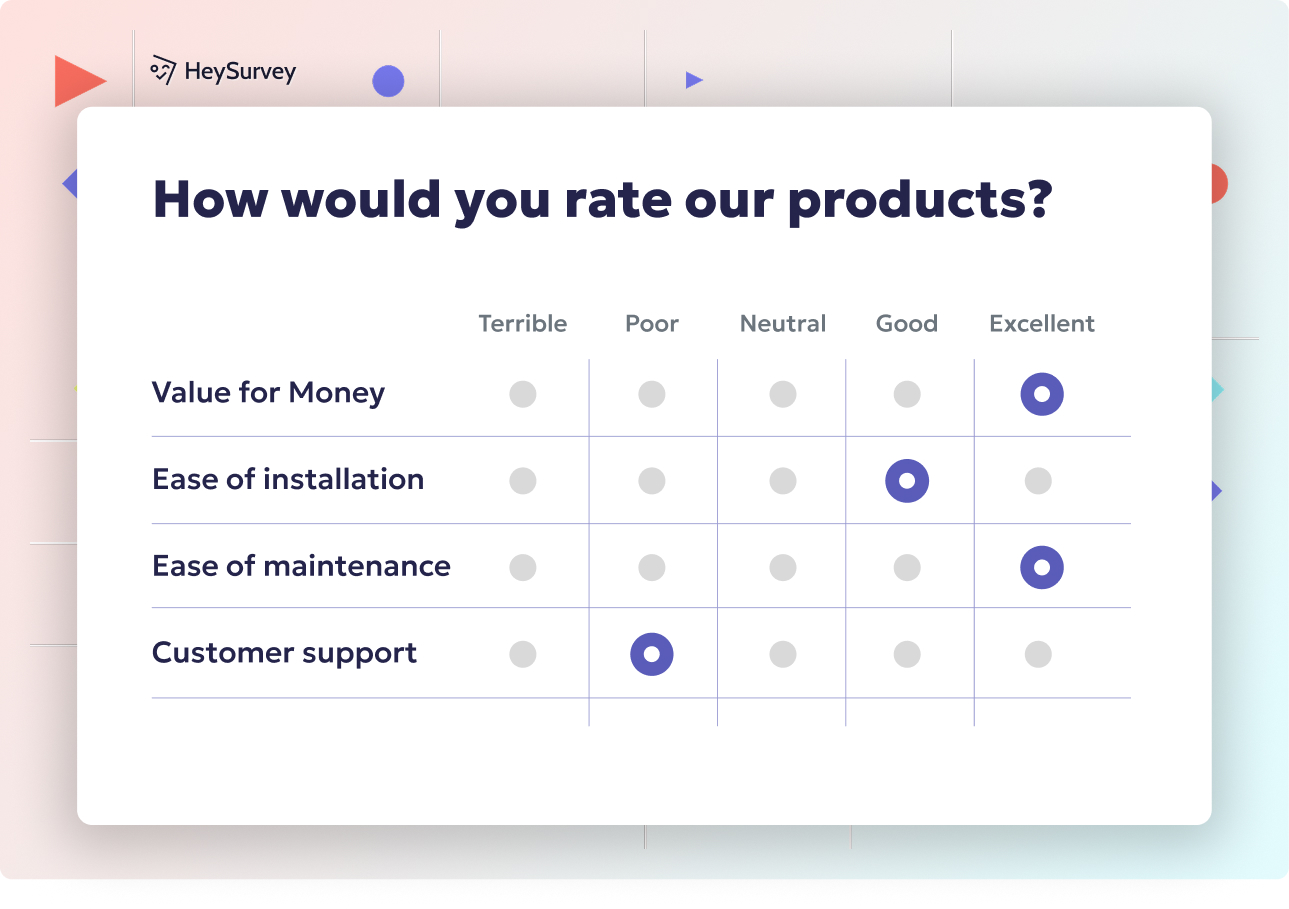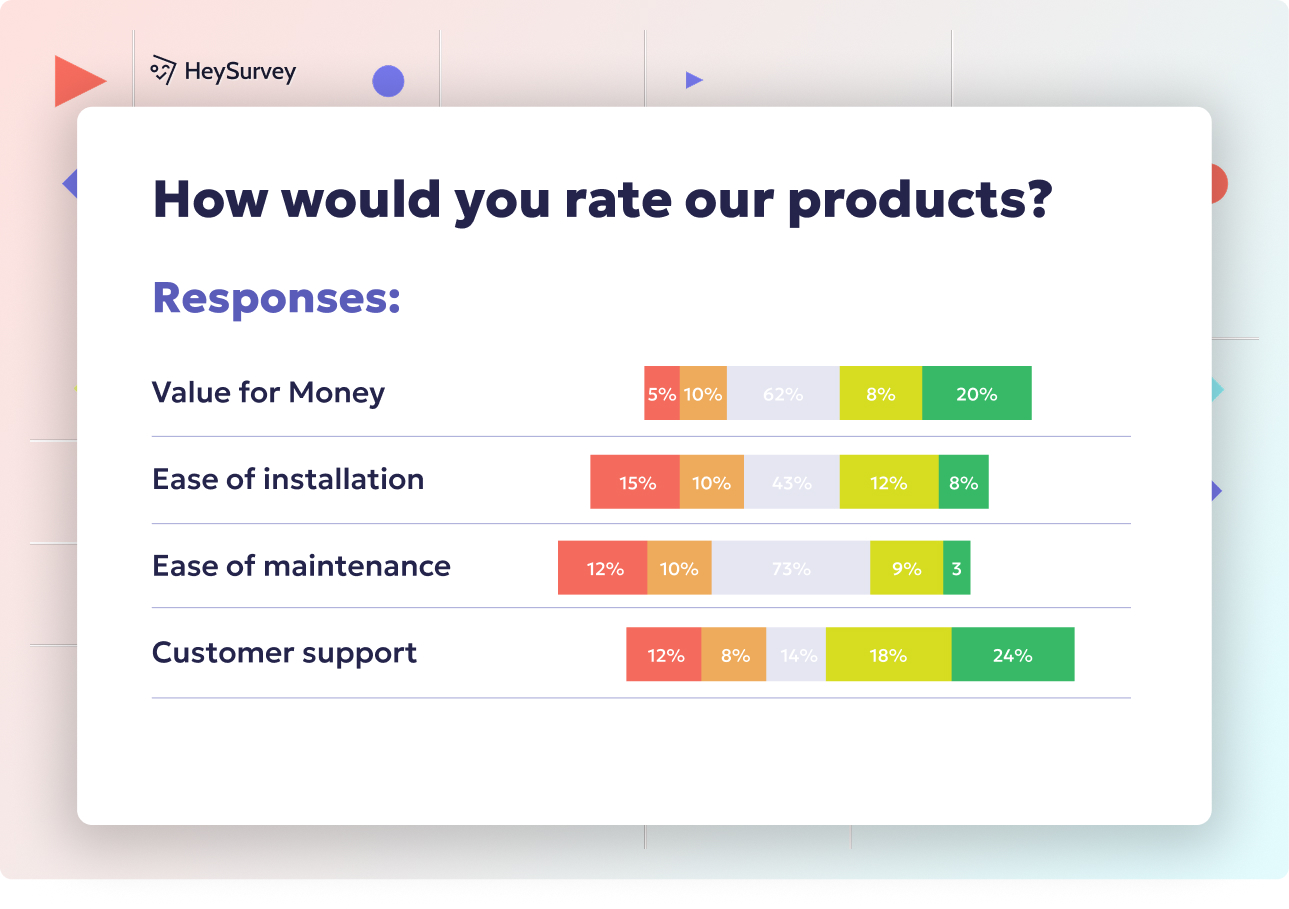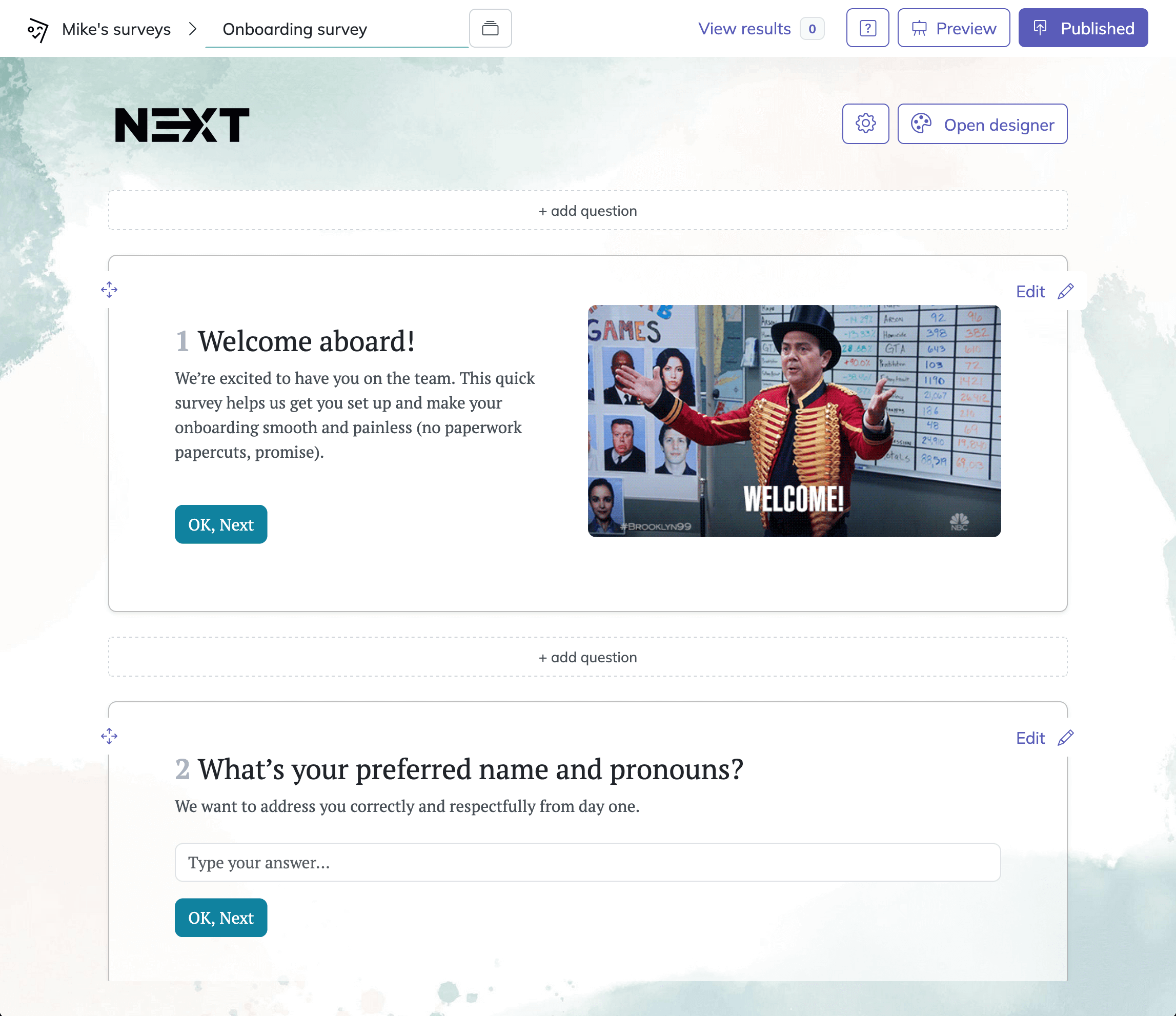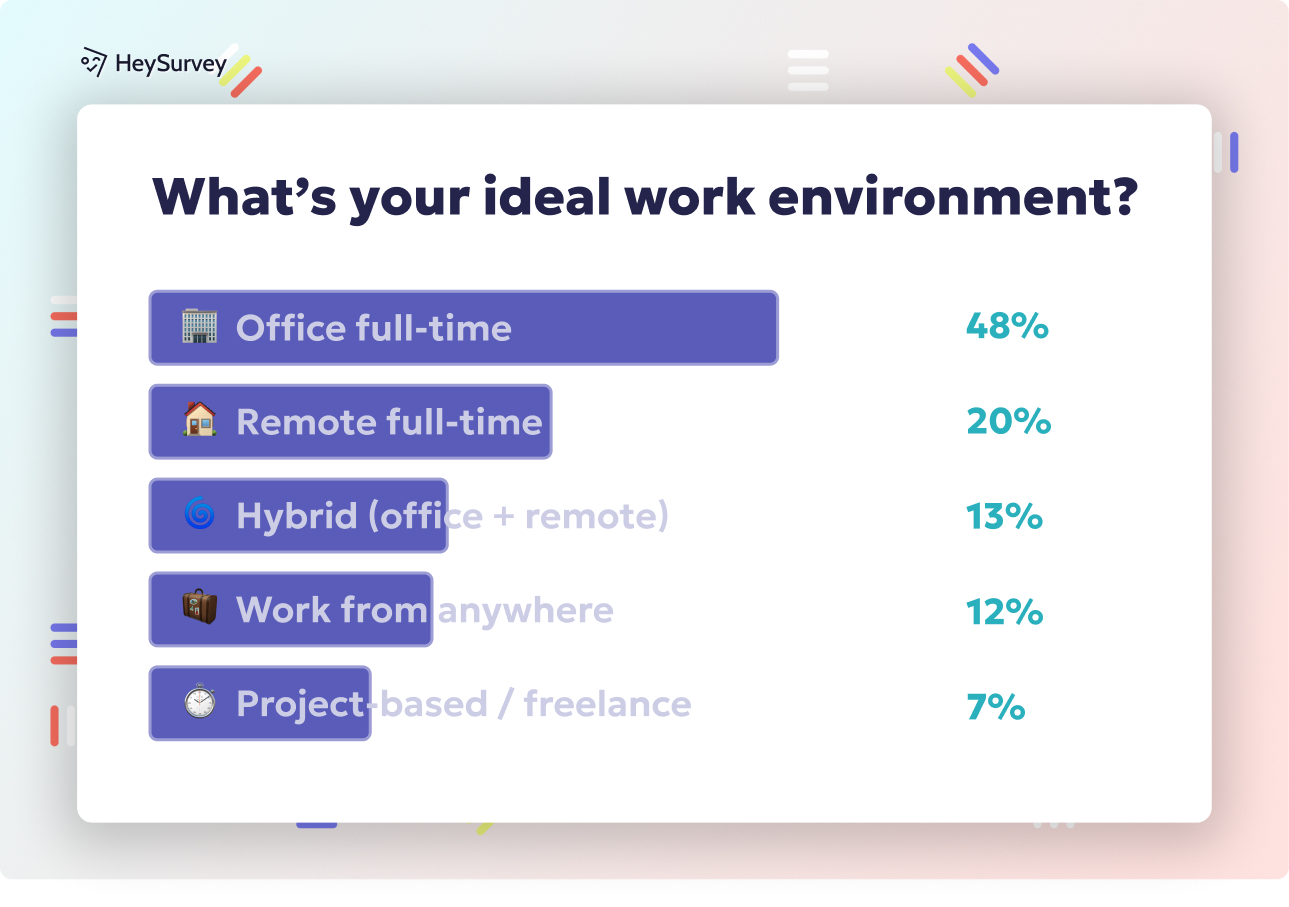25 Preschool Parent Survey Questions: The Complete Guide
Discover 30+ preschool parent survey questions designed to boost feedback, satisfaction, and engagement in early childhood programs.
Preschool Parent Survey Questions: The Complete Guide
Gathering parent feedback for preschool programs is like finding hidden treasure. It uncovers insights that can boost enrollment, enhance retention, and elevate program quality. Crafting the right survey questions is key to unlocking this treasure trove of information. Let's dive into the art of designing effective preschool parent surveys.
Introduction: Why & When Preschool Parent Surveys Matter
Timing is everything. Strategic moments to deploy surveys include:
- Beginning of the year: Set expectations and gather initial impressions.
- Mid-year: Assess progress and identify areas for improvement.
- End-of-year: Reflect on the year's experiences and plan ahead.
- Post-event: Evaluate specific activities or changes.
- After policy changes: Understand parent reactions and concerns.
Core goals of these surveys are to:
- Measure satisfaction: Gauge overall contentment with the program.
- Uncover unmet needs: Identify areas where the program can improve.
- Strengthen communication: Enhance the flow of information between parents and staff.
- Improve curriculum: Ensure the educational content meets children's needs.
- Ensure safety: Confirm that the environment is secure and healthy.
- Support diversity: Promote an inclusive atmosphere for all families.
Surveys can take various forms:
- Online: Accessible and convenient.
- Paper: Traditional and tangible.
- Kiosk: Interactive and engaging.
- SMS: Quick and direct.
Aim for a completion time of 5–7 minutes to respect parents' busy schedules.
Research indicates that while parents generally report high satisfaction with early childhood education programs, they often struggle to accurately assess program quality, highlighting the importance of providing accessible and accurate information to aid parental decision-making. (journals.sagepub.com)

Creating a preschool parent survey with HeySurvey is easy—even if you’ve never heard of it before! Here’s how to get started in just three simple steps:
Step 1: Create a New Survey
Head to HeySurvey and either sign up or start without an account. Choose to create a new survey from scratch, or better yet, select one of the relevant pre-built survey templates tailored for preschool parent feedback. Templates give you a jumpstart by pre-populating questions that fit your needs perfectly. You can open one directly by clicking the button below this guide to save time!
Step 2: Add Your Questions
Once inside the Survey Editor, it’s time to customize. Add, edit, or reorder questions using the big Add Question button. HeySurvey supports multiple question types like single- or multiple-choice, scales (great for NPS or satisfaction ratings), and open-text responses—perfect for gathering those juicy insights. You can also make questions required, add images or helpful descriptions, and even apply branching logic so parents only see questions that matter to them.
Step 3: Publish Your Survey
After finalizing questions, preview your survey to experience it just like parents will. When you’re happy with the flow and design, hit Publish. You’ll get a sharable link to send via email, embed in your website, or post where parents can easily access it. Just remember—publishing and viewing results requires creating a free HeySurvey account.
Bonus Steps for Extra Polish
- Apply Branding: Add your preschool’s logo and customize colors or fonts in the Designer Sidebar to make the survey feel like your own.
- Define Settings: Set your survey’s start/end dates, response limits, and even a custom thank-you redirect URL to keep parents engaged after completing the survey.
- Use Branching: Skip irrelevant questions for certain parents by providing tailored paths through your survey—making feedback collection kinder on their time and more relevant.
Ready to dive in? Click below to start your preschool parent survey with a comprehensive template already waiting for you!
For extra help, check out HeySurvey’s general instructions or explore our related examples: Enrollment & Satisfaction Survey, Communication Feedback Survey, and Safety & Well-Being Survey.
Creating meaningful parent surveys has never been this simple!
Enrollment & Overall Satisfaction Survey
This survey captures the holistic parent experience, from enrollment to daily drop-off, and helps identify potential issues early.
Why & When to Use:
- Timing: Send 30–45 days after enrollment and annually thereafter.
- Purpose: Benchmark Net Promoter Score (NPS) and refine marketing messages.
Sample Questions:
- On a scale of 0–10, how likely are you to recommend our preschool to other parents?
- How satisfied are you with the overall enrollment experience?
- What were the top three factors that influenced your decision to enroll?
- Which part of the daily routine does your child enjoy most?
- What is one thing we could improve before the next term begins?
The Parent Satisfaction with Educational Experiences (PSEE) scale, developed by the Penn Child Research Center, assesses parent satisfaction across teacher, classroom, and school contexts in early childhood education programs. (child.gse.upenn.edu)
Communication & Engagement Survey
Focus on the clarity, frequency, and quality of teacher-parent interactions and school updates.
Why & When to Use:
- Timing: Deploy mid-semester and after introducing new communication tools (app, portal).
- Purpose: Enhance communication strategies and parent engagement.
Sample Questions:
- How clear is the information you receive about your child’s daily activities?
- Which communication channel (app, email, phone, in-person) do you prefer and why?
- How promptly do staff respond to your questions?
- How comfortable do you feel approaching teachers with concerns?
- What type of updates would you like to receive more often?
Curriculum & Learning Outcomes Survey
Evaluate how well educational goals align with parent expectations and child development standards.
Why & When to Use:
- Timing: Administer quarterly or after curriculum revisions.
- Purpose: Ensure the curriculum meets educational standards and parent expectations.
Sample Questions:
- How satisfied are you with the balance of academic and play-based learning?
- Which subject area (literacy, math, art, science) does your child talk about most at home?
- Are learning materials culturally relevant and inclusive?
- How effectively are progress reports communicated to you?
- What additional topics or skills would you like emphasized?
Regular parent surveys in preschools enhance curriculum alignment with educational standards and parental expectations.
Safety, Health & Well-Being Survey
Gauge parent confidence in physical safety, hygiene protocols, and emotional support systems.
Why & When to Use:
- Timing: Send after policy updates (e.g., COVID procedures) or incidents; otherwise once per year.
- Purpose: Ensure a safe and healthy environment for children.
Sample Questions:
- How satisfied are you with current security measures at drop-off and pick-up?
- How confident are you in the school’s illness prevention practices?
- Does your child feel emotionally safe and supported at school?
- Are food allergy protocols consistently followed?
- What safety improvements would you prioritize?
Parent Involvement & Community Building Survey
Identify opportunities for volunteerism, events, and partnerships that foster a supportive preschool community.
Why & When to Use:
- Timing: Conduct at the start of the year and again before major events or fundraisers.
- Purpose: Enhance parent involvement and community engagement.
Sample Questions:
- How interested are you in volunteering in the classroom or on field trips?
- Which event types (workshops, playdates, cultural celebrations) appeal to you most?
- What days/times are most convenient for parent participation?
- How welcome do you feel in the school community?
- What would make involvement easier for your family?
Operational & Administrative Processes Survey
Assess back-office functions—billing, scheduling, policies—that directly affect parent convenience and trust.
Why & When to Use:
- Timing: Ideal after software rollouts, tuition changes, or policy updates; at least once annually.
- Purpose: Streamline administrative processes and improve parent satisfaction.
Sample Questions:
- How easy is it to understand your tuition invoice and payment options?
- How satisfied are you with drop-in or extended-care scheduling flexibility?
- How clear are our policies on absences and make-up days?
- Rate the ease of navigating our parent portal or mobile app.
- What administrative process causes you the most frustration?
Demographics & Diversity Survey
Collect anonymized demographic data to ensure programs and communication reflect family diversity and inclusion.
Why & When to Use:
- Timing: Distribute at enrollment or alongside other surveys; ensure voluntary and confidential.
- Purpose: Promote inclusivity and tailor programs to diverse family needs.
Sample Questions:
- What languages are spoken at home?
- Which racial or cultural identities does your family most identify with?
- Does your child have any special learning or accessibility needs?
- Which religious or cultural holidays are important to your family?
- How inclusive do you feel our preschool environment is?
Dos and Don’ts: Best Practices for High-Impact Preschool Parent Surveys
Do:
- Keep surveys concise: Under 20 questions and mobile-friendly.
- Pilot test: Use a small parent group for clarity.
- Mix question types: Use closed, Likert, and open-ended questions.
- Follow up: Share key findings within two weeks.
Don’t:
- Ask double-barreled or leading questions: Keep questions clear and unbiased.
- Ignore anonymity concerns: Explain data privacy upfront.
- Bombard parents: Stick to a clear survey calendar.
By thoughtfully designing and implementing these surveys, you can gather valuable insights that drive continuous improvement in your preschool program. Remember, the goal is to create an environment where children thrive, and parents feel heard and valued.
Related Parent Survey Surveys

31 Family Engagement Survey Questions to Boost Parent Involvement
Explore 30+ family engagement survey questions with tips to boost parent feedback, caregiver voic...

31 Parent Survey Questions: Types, Examples & Best Practices
Explore 25+ parent survey questions across 8 key types to improve school communication, climate, ...


